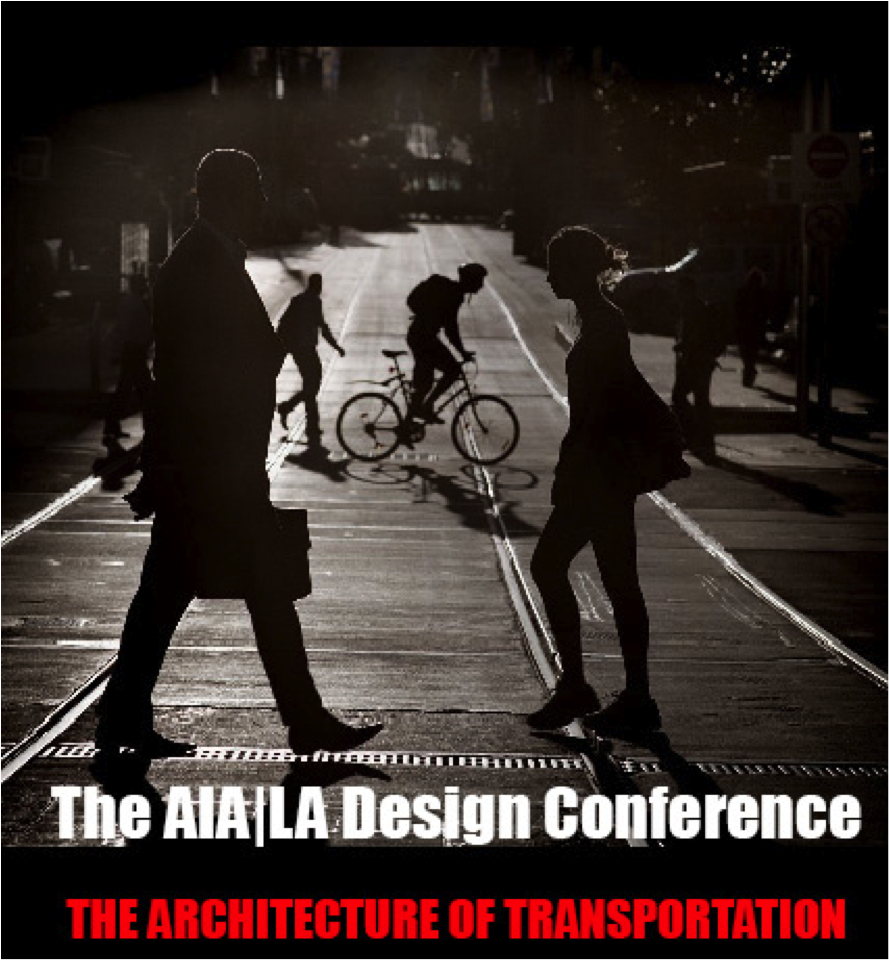For the most part, public transportation in American cities has all the sex appeal of a hearse.
Elsewhere, London's Tube has its emblems and quaint slogans. The old trolleys of Lisbon climb twisting hills on tiny wheels, like elephant ballerinas. Lord Foster's glass tubes lead to the metro in Bilbao. Prague, Riga, Amsterdam, and countless other cities have streetcars that wend slowly over cobblestones. Don't get me started on Hong Kong's double-deckers.
Paris' Art Nouveau signage allows you to dream that Toulouse-Lautrec might get on at the next stop and start sketching. Back in this century, Shanghai's maglev covers 18 miles in 7 minutes.
On our side of the ocean, reluctant huddled masses do their best to keep their distance while diesels plow past strip malls and deposit their charges beneath freeway overpasses. Is this any way to live?
The Los Angeles Chapter of the American Institute of Architects seems to think not.
This Friday the chapter is sponsoring a design symposium, affiliated with Dwell on Design, called "The Architecture of Transportation," which intends to discuss the aesthetic opportunities behind all the busways, light rail lines, streetcars, and subways that California cities are intending to install. Bear in mind that with Senate Bill 375, peak oil, and glacial traffic, cities have little choice but to build mass transit. The architects' implicit question is not whether it will be fast enough (depends on the mode), or cost-effective enough (don't count on it), but, rather, whether it will be sexy enough.
That too is an important question.
 The architects have offered a single image that conveys just about all you need to know about what public transit could be, if policy makers and transit planners were to let passions run wild. The conference's poster--notably arresting than that of the average land-use event--depicts a tantalizing scene: A briefcase-laden Don Draper-esque gentleman passes by a woman as they walk in opposite directions across a downtown street. She appears younger and is perhaps going to yoga. These two caricatures are frozen between two sets of train tracks, her lead foot stepping over the rail. Their eyes are obscured, but it's nice to think that they might trade glances.
The architects have offered a single image that conveys just about all you need to know about what public transit could be, if policy makers and transit planners were to let passions run wild. The conference's poster--notably arresting than that of the average land-use event--depicts a tantalizing scene: A briefcase-laden Don Draper-esque gentleman passes by a woman as they walk in opposite directions across a downtown street. She appears younger and is perhaps going to yoga. These two caricatures are frozen between two sets of train tracks, her lead foot stepping over the rail. Their eyes are obscured, but it's nice to think that they might trade glances.
In the background, lit by an undefined, but blazing, source of mid-evening light, cyclists and other pedestrians make their way to bars, restaurants, trysts, and homes. The streetcar that dropped off all of them has headed up the hill out of sight, but another is on its way.
If Mr. Draper (or, better yet, someone like him -- but younger and unmarried) and that coed were to yield to their urgets and embrace mid-street, as if the war had just ended, they could do so. Why? Because no cars are coming to run them over.
It's a fanciful, but deliberate, suggestion that American cities are such passionless places because Americans' cars make it so (the image is by the photographer Mugley and comes from a Wired article). There is no flirting between windshields. No accidental touches through driver-side windows. No taking refuge from the rain under awnings when drivers are already sealed up. Even for those who do take transit, there are too few makeout sessions as the El reaches the end of the line. The French aren't more romantic than Americans; they just have more opportunities.
Perhaps "sexiness" is a little too vague to form the basis of public policy (and, yes, there may be more pressing matters). I would certainly hate to try to quantify it or do a cost-benefit analysis. But "community," which features prominently in the symposium's panels, may be a reasonable approximation for sexiness. The point is that, as everyone from Jane Jacobs to Ed Glaeser to anyone else with common sense has told us, spontaneous, genuine interactions between people -- not cars -- can lead to both happiness and prosperity. We just need places where those interactions can take place and transportation to get us there in the first place.
So there's another reason for cities to get people out of their cars and instead seduce them on to the train, the bus, and the street. If not, cities themselves may end up in the morgue.
